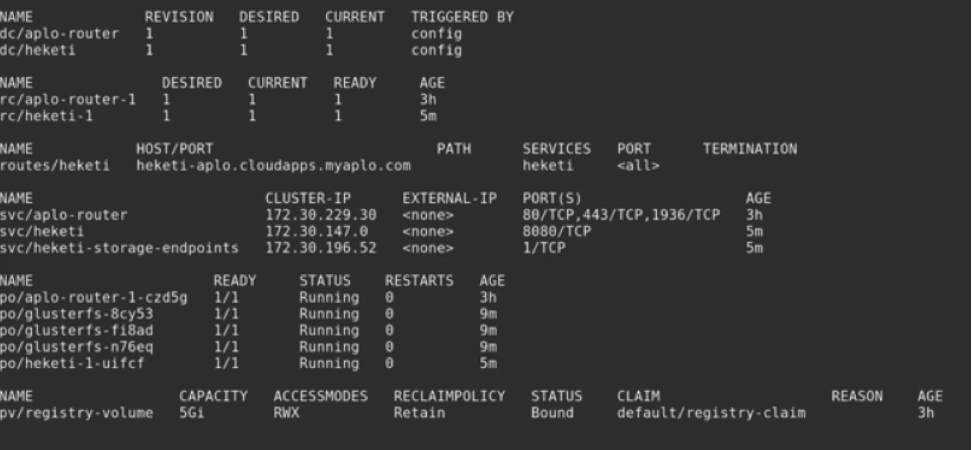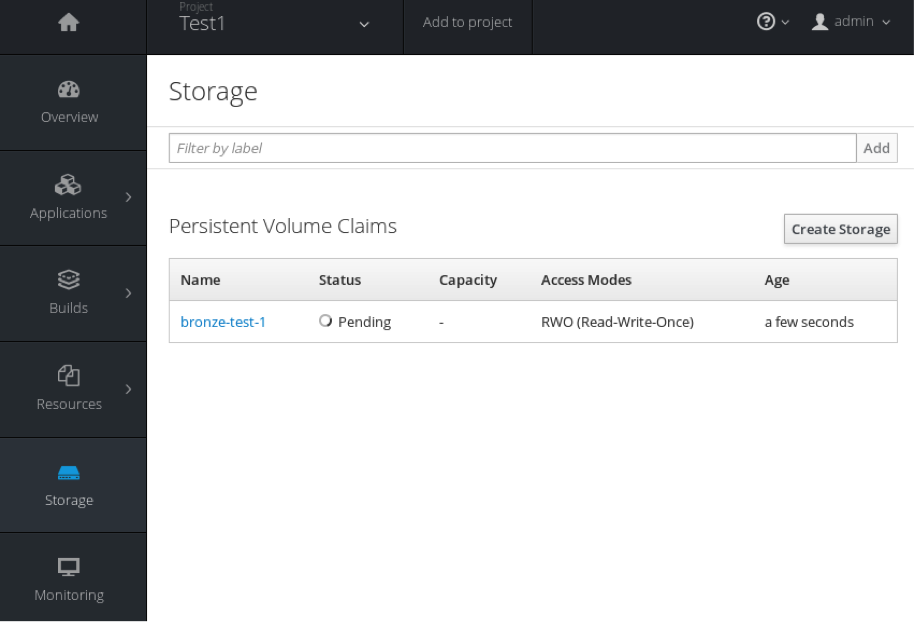The new Red Hat OpenShift Container Platform offers a rich user experience with dynamic provisioning of storage volumes, automation, and much more
By Michael Adam, Engineering Lead, Container Native Storage, and Sayan Saha, Head of Product, Red Hat Gluster Storage
Today, Red Hat announced general availability of Red Hat OpenShift Container Platform 3.4, which includes key features such as enhanced multi-tenancy and streamlined deployment for hybrid clouds. In addition, a number of open source storage innovations have been included in this release, which enable easier storage management and provisioning across the lifecycle of containers.
The story so far
Containers were built to be ephemeral and stateless. However, stateful applications running in containers need enterprise-grade persistent storage. Over the past 18 months, Red Hat has delivered a continuum of innovation around persistent storage for containers, leading the charge on both fronts - the open source communities and enterprise products. Red Hat offers container-native storage - durable, distributed, software-defined storage integrated deeply into the Red Hat OpenShift Container Platform, managed by Kubernetes.
Rich developer and management experience
In the latest release, Red Hat OpenShift Container Platform 3.4 offers dynamic provisioning of persistent volumes, allowing for a much richer developer experience, addressing annoying delays due to lengthy storage provisioning cycles needed by traditional storage platforms.
Storage administrators can expect to find that easier volume management with dynamic provisioning frees them up for more value-added tasks. Developers building cloud-native apps deployed in containers can benefit from faster storage provisioning and a better user experience.
DevOps managers can relish the automation and integration through a new deployment tool included with the subscription that can deploy container-native storage with push-button simplicity.
Dynamic provisioning for persistent volume claims
Prior to this release, storage administrators and application developers were limited to a static provisioning model where persistent volumes (PVs) of fixed capacity had to be pre-provisioned manually to be consumed by applications running in Kubernetes pods.
Persistent volume claims (PVCs) are used to consume storage resources in Kubernetes like pods that consume compute resources. When new PVCs were received, an attempt was made to match the PVC request with the closest available PV in terms of capacity, and if one was found the claim would be bound to it. This scheme is inefficient.
Consider a situation where 10, 100 GB PVs have been pre-provisioned and made available. A request for 50 GB of storage would be matched to one of the available 100 GB PVs. This is wasteful as storage is over-committed. On the other hand, a request for 150 GB of storage would go unsatisfied as there is no close match, even though there is unused storage capacity.
The new dynamic provisioning feature fixes that issue by automating the provisioning of storage volumes. For instance, a 50 GB PVC request is addressed using a 50 GB PV that is dynamically provisioned for developers requiring zero admin intervention. In other words, users can expect to get exactly what they asked for as long as the underlying storage platform has available capacity.
Note that dynamic provisioning is supported even when Red Hat Gluster Storage serves out storage from a dedicated storage cluster in addition to container-native storage. This demo shows how container-native storage can be dynamically provisioned in OpenShift Container Platform.
Dynamic provisioning using storage classes
Dynamic provisioning is enabled by a new feature in OpenShift called storage classes. Storage classes enable storage admins to describe as well as classify their various storage implementations that are available to be used by the OpenShift cluster, and they enable developers to configure specific parameters when requesting storage on demand. Container-native storage can be configured as a storage class, which allows OpenShift developers to dynamically provision storage when submitting claims against the storage class, as seen below.
Faster and easier storage deployments using Kubernetes daemon sets
Container-native storage now ships with a deployment tool that will deploy the whole system in an already installed OpenShift cluster. The deployment tool is flexible in that it can easily be used in Ansible playbooks. The administrator only needs to prepare a topology file, a JSON-formatted file describing the nodes and storage devices to be used. Based on that, the deployment of the Gluster storage cluster and the management server as pods in the OpenShift cluster is achieved with the invocation of just a single command. Once deployment is completed, the Gluster storage is ready for both manual and dynamic provisioning with an appropriate storage class. In case of any errors encountered during deployment, the tool supports an abort operation that undoes the failed partial deployment, so that it can be started from scratch. This demo shows the deployment tool in action.
GID level security and endpoints
Several features have been added to Red Hat OpenShift Container Platform 3.4 to create a more secure storage environment. The first of these is the addition of system-controlled, preallocated GIDs for the Red Hat Gluster Storage container. This enables the container to run as a non-root user, permitting only allowed users to access the data.
Second, usability with endpoints has been resolved with the deployment of a service and endpoint for each dynamically provisioned volume. This allows PVs to be specific to the requestors namespace without the added steps of manually creating these resources.
The most comprehensive persistent storage for containers
Red Hat continues to be a major contributor to the Docker and Kubernetes communities. In fact, as of today, Red Hat has the second-most contributors in each, second only to Docker and Google, respectively. Much of the innovation happening upstream is focused on solving the persistent storage challenge for stateful applications. Red Hat has contributed a number of volume plugins for a variety of protocols. Learn more about the latest innovations from Red Hat during the virtual event on January 19 or in a webinar with container storage experts on January 24. Learn more at redhat.com/containerstorage.
저자 소개
채널별 검색
오토메이션
기술, 팀, 환경을 포괄하는 자동화 플랫폼에 대한 최신 정보
인공지능
고객이 어디서나 AI 워크로드를 실행할 수 있도록 지원하는 플랫폼 업데이트
클라우드 서비스
관리형 클라우드 서비스 포트폴리오에 대해 더 보기
보안
환경과 기술 전반에 걸쳐 리스크를 감소하는 방법에 대한 최신 정보
엣지 컴퓨팅
엣지에서의 운영을 단순화하는 플랫폼 업데이트
인프라
세계적으로 인정받은 기업용 Linux 플랫폼에 대한 최신 정보
애플리케이션
복잡한 애플리케이션에 대한 솔루션 더 보기
오리지널 쇼
엔터프라이즈 기술 분야의 제작자와 리더가 전하는 흥미로운 스토리
제품
- Red Hat Enterprise Linux
- Red Hat OpenShift Enterprise
- Red Hat Ansible Automation Platform
- 클라우드 서비스
- 모든 제품 보기
툴
체험, 구매 & 영업
커뮤니케이션
Red Hat 소개
Red Hat은 Linux, 클라우드, 컨테이너, 쿠버네티스 등을 포함한 글로벌 엔터프라이즈 오픈소스 솔루션 공급업체입니다. Red Hat은 코어 데이터센터에서 네트워크 엣지에 이르기까지 다양한 플랫폼과 환경에서 기업의 업무 편의성을 높여 주는 강화된 기능의 솔루션을 제공합니다.





